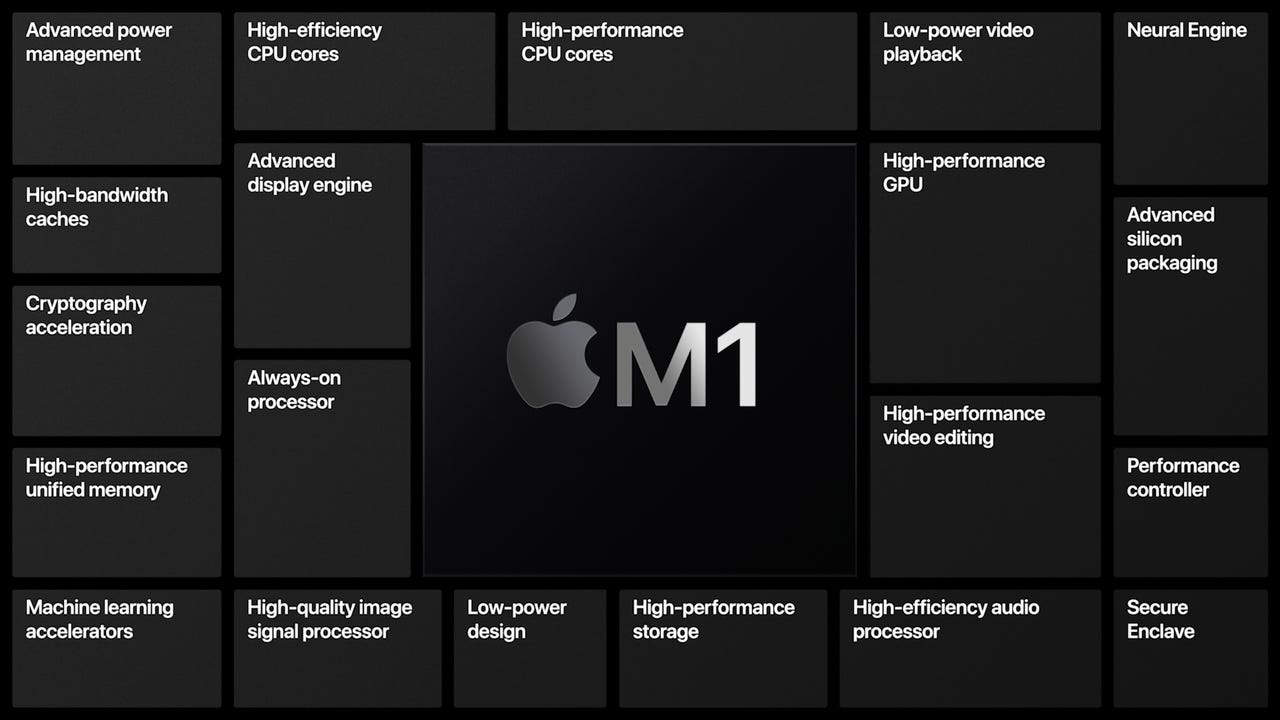Apple pushes M1 competitive advantage with iPad Pro and iMac updates


Apple Silicon
Apple is transitioning to its own silicon in a hurry as the M1 system on a chip moves to the iPad Pro as well as the iMac.
Also: Apple's Spring Loaded event: The five biggest announcements
After the M1 debut last year, Apple was expected to take a somewhat measured pace to rolling its own silicon out to all of its products. After dropping the M1 into the iPad Pro it's worth pondering whether the processor lands into the iPhone at some point.
Overall, Apple's latest product refresh highlights how the company is taking the next step in overhauling its lineup with its own silicon. The Apple M1 processor, based on Arm, gave the MacBook a surge of demand as the laptops launched to rave reviews.
Why not extend that M1 momentum to the rest of Apple's lineup?
Must read:
- Apple brings M1 to iMac in overhaul with wide range of colors, starting at $1,299
- Apple TV 4K gets an upgrade with the A12 bionic processor
- Apple's credit card gets a family plan with new Apple Card Family program
- Apple launches purple iPhone 12 and 12 mini as well as AirTags
With the iMac, Apple highlighted how the M1 processor, which doesn't need fans and bulky logic boards, can lead to design breakthroughs. Indeed, the iMac is 11.5 mm thick and can fit in multiple places around the house. The iMac could be an appliance or a home office workhorse.
First look: Apple's 'Spring Loaded' event [pictures]
Leo Gebbie, CCS Insight analyst, said:
It is little surprise Apple has resisted updating the iMac over the last few years, given the transformational impact the M1 architecture has had on the overall design. This is an endorsement of Apple's multi-year, multi-billion-dollar investment in creating its own silicon platforms which now power all its key devices. It will be interesting to see what impact the M1 platform has on other parts of the Mac portfolio as Apple harnesses it to deliver further extensive design updates.
With the iPad Pro update with M1, Apple played it more like it did with the initial Apple silicon MacBooks--the focus was on performance. The design breakthroughs weren't there. The iPad Pro looks like previous versions except with performance advantages.
Going forward, Apple is likely to change that approach. You can expect Apple to use M1 to push more design changes. The M1 lineup today includes:
- MacBook Air.
- 13-inch MacBook Pro
- Mac mini.
- iPad Pro.
Apple is likely to push its M1 advantage throughout its portfolio because it provides better integration, design possibilities as well as less dependence on the likes of Qualcomm, Nvidia, and Intel. For the quarter ending Dec. 26, Apple's Mac revenue was $8.67 billion, up from $7.16 billion a year ago. That demand surge was partly attributed to M1 Mac options.
Bottom line: Apple is going to step up its M1 rollout given the transition has gone smoothly. In addition, M1 also means Apple gets to improve profit margins, designs, and product performance.
Must read:
- MacBook Pro M1 review: Apple amazes with its first Silicon MacBook Pro
- Apple M1 is the boost the Windows ecosystem needed: Qualcomm
- M1 Macs: The opportunities Apple seized and sacrificed
- 'Apple is going to make some serious inroads' with the M1 Mac, says Jamf CEO Dean Hager
- Apple's 13-inch M1 MacBook Pro: An enterprise buyer's review